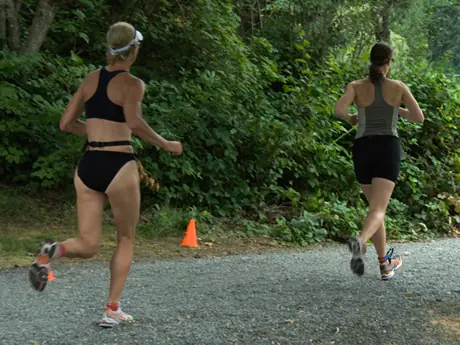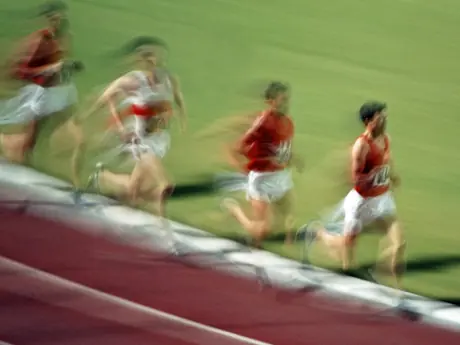
Many triathletes view the treadmill as a last resource in winter, or an option for when you're short on time. Dave Scott, however, sees the treadmill as a valuable training tool—even when the weather's good.
"I have my athletes do one treadmill session per week throughout the whole year," he says.
Here, Scott discusses the advantages and disadvantages of training on the treadmill, and provides a workout for your next indoor session.
Advantages
"It's easy to gauge progress over time because your environment is consistent. In a four- to six-week cycle, you have a constant every week. Plus, you get immediate feedback on workload.
"It's also a great place to work on cadence and form—especially if the treadmill is in front of a mirror.
"For some athletes prone to injury or overtraining, I actually like to break up the long training day into two long training days. And I'm not opposed to one of those being done on the treadmill."
Disadvantages
"The belt feels different: You don't get the nuances of the road. Also, if the treadmill is flat, it's easier to run on the belt than outside.
"The important thing is to keep up muscular strength and leg turnover in the offseason so balance, symmetry and the stimulation of your faster fibers are enhanced. Don't just get on the treadmill and do slow, steady runs every time.
Note: Run at a 1.5-percent incline to more closely mimic running on a flat road. When you're working on foot turnover, however, you should go back down between 0 and .5 percent.
Treadmill Workout
This workout will help you maintain muscular endurance—elevating the firing of the faster twitch fibers—and leg turnover in the offseason.
- Warm Up: 8-12 minutes at 1.5 to 2 percent grade, starting off with a slow jog. In the last 3-5 minutes of the warm-up, gradually increase to your standard aerobic speed (outside pace). This gives your heart rate time to catch up. (Note: HR is not a good indicator until you've been running for about 15-20 minutes.) Once at aerobic speed, you're ready to go into the first set
- First Set: 6x2 minutes on a hill with 1-minute rest intervals; effort should be moderately hard at the offset
- 45 seconds at 5 percent grade (don't change speed)
- 45 seconds at 6 percent grade (don't change speed)
- 30 seconds at 7 percent grade (don't change speed)
- 1 minute rest interval at 2 percent grade (remain at your aerobic pace; don't go down to a softer speed)
- Repeat 5-8 more times
- Second Set (leg turnover): 8-12x20 seconds at 0-.5 percent grade; you should be working at a sub-threshold pace. Segments are short to avoid unnecessary stress.
- Run for 20 seconds with good balance, symmetry and control; it's not a flat out sprint.
- Jump off belt and straddle the treadmill for 20 seconds
- Jump back on for 20 seconds
- Repeat this sequence 8-12 times
- Third Set (if time permits): Run steady at aerobic pace for 12-20 minutes (1.5-2 percent grade).
- Extra Credit: Repeat sets 1 (with slight modification) and 2.
- Set 1 (modification): 6x1 minute on hills from 5- to 7-percent grades. Effort should be moderately hard to hard at the end. Include a rest interval of 1 minute between each round.
- Set 2: Same leg turnover set at 8x20 seconds
- Cool Down
Don't forget to track your progress over time. In a four- to six-week period you might notice:
- Improved perceived exertion, where the same workout feels easier.
- A slight increase in speed. (Note: Don't push it. Hard efforts should be avoided; all efforts should be moderate.)
- A lower heart rate for the same work load.
 Sign up for your next triathlon.
Sign up for your next triathlon.
About the Author

Get ACTIVE on the Go


Couch to 5K®
The best way to get new runners off the couch and across the finish line of their first 5K.
Available for iOS | Android







Discuss This Article